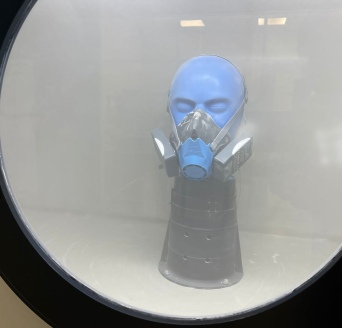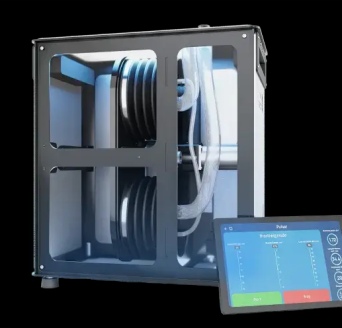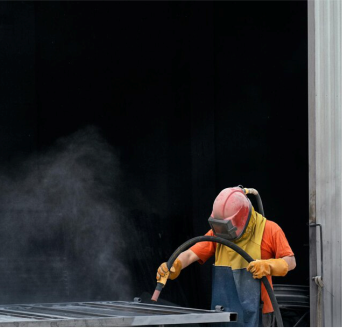RPE testing at the R&D and production: new opportunities and advantages
The development and production of personal respiratory protective equipment (RPE) is impossible without quality control. In this article, we will consider what problems a company can avoid with regular RPE testing at each product life cycle and how this affects the company's market prospects.
Why is it important to test RPE at the development stage?
It is at the research and development stage that the basis for the safety, efficiency and convenience of the future product is formed. RPE testing at the development stage is a creative and analytical process for a design engineer who can create future RPE operating conditions, even extreme ones, for example, with increased pulmonary ventilation, and make sure that it will protect the end user in a hostile breathing environment. Therefore, RPE testing at the development stage allows:
- Identify design weaknesses during stress tests.
- Optimize characteristics before the product enters the market.
- Reduce the risk of defects during mass production.
- Identify weak and unreliable technological and engineering solutions.
- Assess the efficiency and reliability of the component base.
- Prepare for successful certification.
- Accelerate market entry.

In the conditions of the modern market, RPE developers are constantly looking for new solutions - design, components, etc., to meet international safety criteria, stand out from competitors and optimize costs.
Real case: “Brand entering a new market”
A developer of filtering RPE decided to enter the international market, where other standards are applied to RPE. For example, in Europe, dolomite dust (EN) is used to test dust resistance, and in the USA - silica dust (NIOSH). In a private laboratory, the developer found out that the current respirator model does not meet the new standard, and he needed to change the design. He selected a new component base, changed the design and at each stage of development tested the RPE on testing equipment that meets NIOSH requirements. Once the new model passed the internal quality control, the RPE developer was confident and submitted it for certification, which confirmed its compliance with the standard requirements. Thus, the developer received NIOSH certification on the first try and entered a new market relatively quickly.
Or imagine another scenario: “RPE optimization”
A developer of filtering RPE decided to optimize the design of the facepieces and use a new filter material as an experiment, which can increase the level of protection and increase the wearing period. Testing the new respirator model at the R&D stage will show whether it meets the requirements of the standards and whether it is worth launching mass production of the new model.
Why is it important to test RPE at the production stage?
Obtaining certification is an important step, but it does not guarantee that each batch of RPE will meet the declared characteristics. Manufacturing processes are subject to deviations, and even minor changes can affect the effectiveness of protection. Therefore, regular testing of RPE at the production stage is a necessity, not a formality.
Case continuation:
Our hero presented a new model of respirator at an international exhibition and found a client in the construction industry. The client took a trial batch - he wants to test several manufacturers and conduct internal tests for breathing resistance and tightness of fit. During the incoming inspection, it turned out that some manufacturers' certified models were defective and did not meet the requirements. As a result, the construction company purchased a full batch of respirators from the hero of our case, who tests RPE at each production cycle, reducing the risk of releasing defective products.

Advantages of testing RPE during production:
Quality control of each batch:
- during the certification process, only the batch of products manufactured specifically for certification is tested, but mass production always leads to a change in quality and to discrepancies with the characteristics of certified samples;
- manufacturing defects, such as incomplete tightness or reduced resistance to external influences, can occur due to changes in materials or equipment settings;
- regular testing helps to identify and eliminate defects before the product enters the market.
Compliance with standards:
- many standards, including EN, NIOSH, require periodic inspections throughout the production cycle;
- failure to comply with these requirements may result in product recall and loss of certificate.
Protection of brand reputation:
- defective RPE may lead to mistrust from customers, lawsuits and financial losses;
- regular testing in production helps prevent situations where the product does not perform its function in a critical environment.
Optimization of the production process:
- testing helps to identify weak points in the manufacturing technology and adjust the process in time. This reduces the level of defects and increases the economic efficiency of production.
The bottom line is
RPE testing at the development (R&D) and production stage is not just a check of operability, but a guarantee of safety, efficiency and commercial success of the product. Companies that pay attention to testing at early stages receive real business advantages:
- quick entry into new markets - without failures at the certification stage;
- cost minimization - less defects, less losses;
- trust of large customers - stable quality at any time of incoming inspection;
- production flexibility - identify problems before they become costly.
SECOND BREATH OU offers ready-made modern solutions for laboratory equipment for testing RPE at each stage of the life cycle. We understand that internal quality control is one of the stages of the process of creating and producing RPE, so it should not take much effort and time from the developer and manufacturer. SECOND BREATH OU testing equipment will make your testing process faster, more flexible and easier.

Contact us now – we will find the best solution for your laboratory and production!




_342x328_4c7.jpg)









